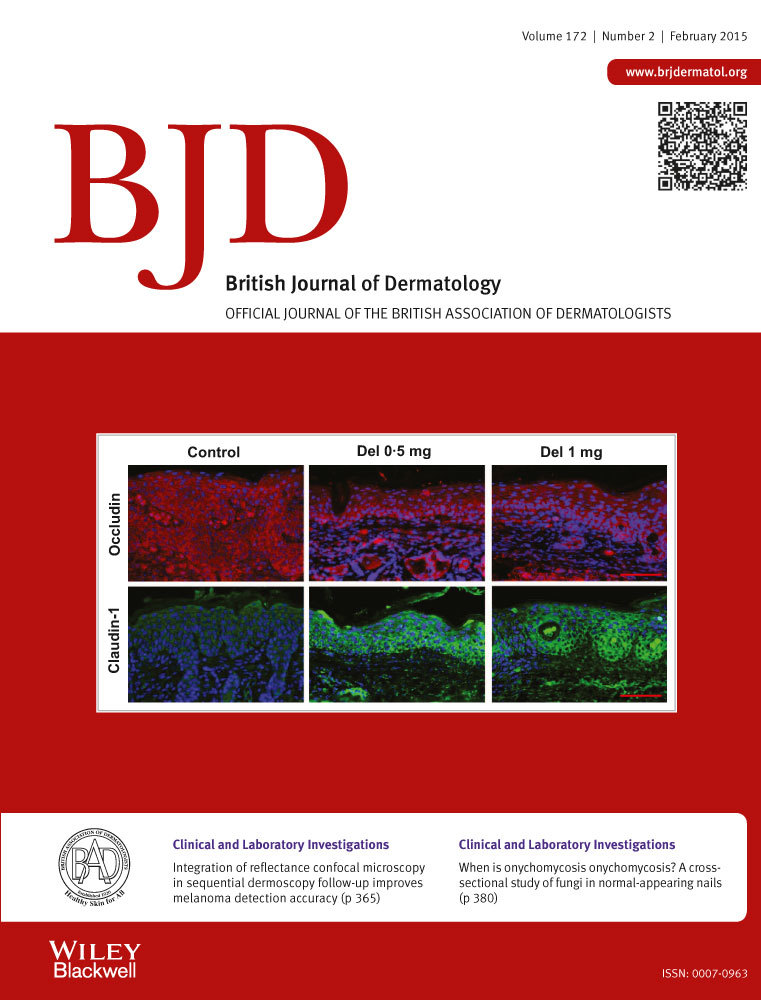When is onychomycosis onychomycosis? A cross-sectional study of fungi in normal-appearing nails
Summary
Background
The presence of fungal organisms in healthy-looking toenails has previously been reported in individuals with a known dermatophyte infection and in those with onycholysis, but has not been extensively studied in individuals who do not present with foot pathology.
Objectives
To determine the prevalence of fungal organisms in the toenails and on the soles of normal-appearing feet.
Methods
Adults who visited a dermatology clinic between June 2012 and February 2013 for concerns unrelated to fungal infection of the nails and feet participated in this study. Participants' feet were clinically examined, and skin and nail samples were collected and sent for potassium hydroxide (KOH) light microscopy and culture.
Results
Five hundred and eighty-five individuals with normal-appearing feet and toenails participated in this study. Fungal organisms were detected in 9·2%, 3·9% and 3·1% of participants' toenails by KOH, culture, and a combination of KOH and culture, respectively, while fungal organisms were present on the soles of the feet of 7·0%, 2·9% and 1·4% of participants by KOH, culture and both these methods combined, respectively. A significant association between the presence of fungal organisms in toenails and on the soles of the feet was found (P < 0·01).
Conclusions
The presence of fungal organisms in the nail, even in the absence of clinical signs, may be termed ‘subclinical' onychomycosis. The normal-appearing nail plate may act as a reservoir for infectious dermatophyte and nondermatophyte organisms. When left unimpeded by the host's immune system, these organisms are inclined to proliferate to produce clinically apparent disease.




